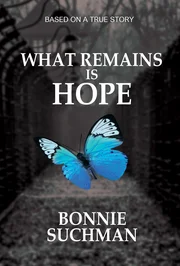Readers first meet the four Heppenheimer cousins in Frankfurt in 1930, where they have gathered for their grandmother’s funeral. Gertrude, the youngest, is just 10 years old, and she’s excited because she’ll get to see her father, Robert—a rare occurrence since he moved to Strasbourg three years ago, after he and Gertrude’s mother, who’s Lutheran, divorced. Trudi and Gustav are both 16, and Bettina is 19; each is the sole offspring of a different Heppenheimer brother. Over the years, they develop a closeness that continues to evolve as they move into adulthood. Along the way, Gertrud and Gustav create a “cousins’ code”; although it’s designed to help them keep secrets among themselves and signal the uniqueness of their relationship, it also enables them to communicate when the Nazis make their lives increasingly precarious. Germany is in a deep economic depression following its defeat in World War I, and antisemitism is rising around the country. When Adolf Hitler comes to power in 1933, the persecution of Jewish people, and anyone with Jewish relatives, increases exponentially. Suchman’s disturbing family drama, filled with long-held secrets, feuds, and resentments, offers readers a visceral, up-close, and terrifying inside view of life in Germany, Belgium, and France for the Jewish characters, and for their spouses and children who don’t or can’t flee Germany before the borders close. Readers, with the benefit of chilling hindsight, will be pulled into the hellish setting as new Nazi regulations come into effect, banning Jewish people from many stores, from owning businesses, or from holding funerals before sunset; later, the characters experience the burning of temples, have their property confiscated, and endure horrific beatings—all before the terrifying deportations begin.
Categories
WHAT REMAINS IS HOPE
